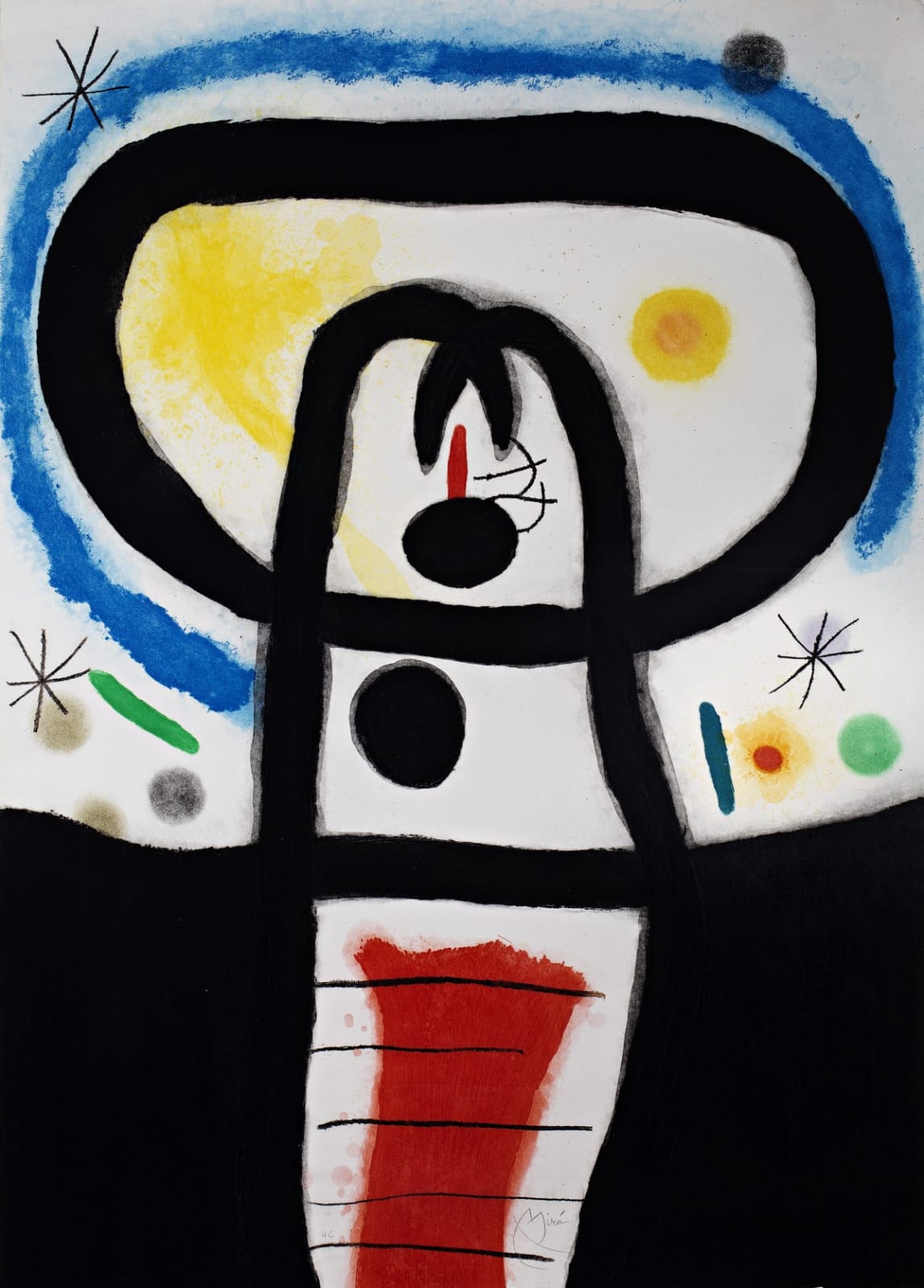“The artist does not live in bliss.” wrote Joan Miro. “He is sensitive to the world, to the pulsation of his time, to the events which compel him to act. This is bound to happen. This is not an intellectual attitude but a profound feeling, something like a cry of joy which delivers you from anguish.”
The anguish from which Miro wanted to be delivered were events not of his making. The desire of his fellow Catalans to be independent from Spanish Rule, the Spanish Civil War, World War ll and the reign of Francisco Franco all contributed to Miro’s desire to live in a world where he could paint peacefully.
The place Miro went to most often was a family-owned farm in the village of Mont-roig, where he began to paint in earnest after a bout of typhus when he was eighteen. Miro spent part of every year of his life in Mont-roig, except for years 1936 through 1939, the era of the Spanish Civil War.
Finding Paris
When Miro saw the works of the new wave of French painters in 1920, he moved to Paris. It was there that he met artists, poets and writers, many part of the Dada movement, who inspired artistic freedom in Miro that he hadn’t known in Catalonia. Paris became Miro’s second home for ten years. He spent winters in Paris and summers in Catalonia.
Ernest Hemmingway bought The Farm one of Miro’s early works of Mont-roig, that he painted from memory while in Paris. Hemingway said, “It has in it all you felt about Spain when you are there and all that you fell when you are away and cannot go there.” It is currently in the permanent collection of the National Gallery.
In Normandy
In 1939, Catalonia was overtaken by Franco’s troops and Miro fled to Normandy with his wife a young daughter. There was turmoil elsewhere in the world, but Miro was able to live a quiet life, and paint, in Normandy.
It was during this time that Miro had a breakthrough, by happy accident, in his work. In a letter to his New York art dealer, Pierre Matisse (the youngest son of Henri Matisse) he wrote, “I dipped my brushes in solvent and wiped them on white sheets of paper with no preconceived ideas. The blotchy surface put me in a good mood and provoked the birth of forms, human figures, animals, stars, the sky and the moon and the sun. I drew all this in charcoal with great vigor. Once I’d managed to obtain equilibrium and bring order among all these elements, I began to paint in gouache with the minute details of a craftsman and a primitive.”
The works Miro did during that period became known as his Constellation Series.The serenity of his time in Normandy was shattered by the German bombings of Dieppe. Miro and his family fled to Paris, taking the Constellation paintings with them. The family left Paris and returned to Spain just eight days before the Germans entered Paris.
Finally, Majorca
In 1941, just one year after the German occupation of Paris, MoMA presented the first major retrospective of his work, which led to commissions from around the world.
Miro’s architect friend and fellow Catalan, Josep Lluís Sert, designed a studio for Miro in Majorca. When he moved into the studio he unpacked paintings that he hadn’t seen since the 1930s. He stopped painting for two years, working only in clay and printmaking. When he returned to painting, his images were simplified, his colors brilliant. Miro continued to work in his studio until his death, in 1983, at age 90.
Joan Miro works for sale at Surovek Gallery
Many of the works by Joan Miro for sale at Surovek Gallery were created during the latter part of his life, a time when he had, at last, had his own light, bright and serene studio in which to work. Please contact us for more information about La Femme Angora or any of the other works of Joan Miro available at Surovek Gallery.




